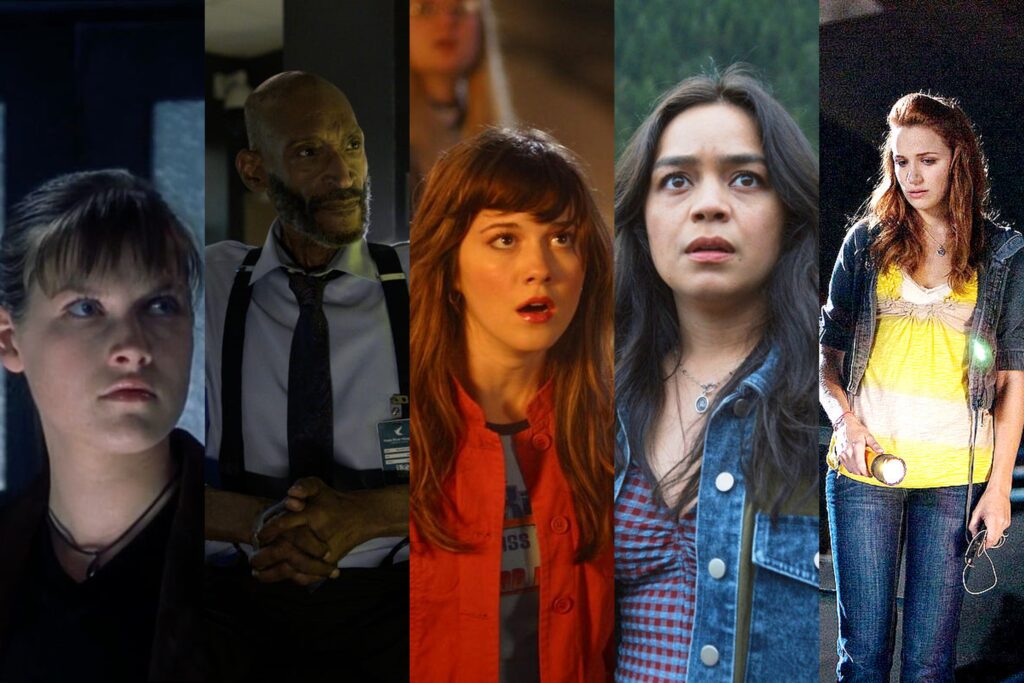
Every cinephile has their blind spots. One of the unfortunate consequences of a mortal lifespan is that we lack sufficient time to watch all of the movies we want to before we die. Some people have never seen a film by Godard or Ozu. Others have never known the glory of Citizen Kane or Casablanca. My own confession: Until last week, I’d never seen a single Final Destination movie.
As ignorance goes, this may seem less shameful than other gaps in motion-picture consumption. But the horror franchise—which originated in 2000 and methodically churned out four more entries over the next 11 years, then went on hiatus before being resurrected last week—has amassed a certain level of, it not artistic prestige, at least cultural penetration. Its recurrent and enduring premise—expendable characters are dispatched not by some masked or malevolent slasher, but by the unseen, inexorable force of Death itself—is now idiomatic. When Osgood Perkins’ The Monkey arrived in theaters earlier this year, most critics (including this one) couldn’t resist commenting that its cavalcade of tragicomic kill sequences resembled a Final Destination flick. In constantly cutting short its residents’ lives, the series has proved weirdly eternal.
The appeal of the franchise is both easy to understand and hard to adequately explain. That’s because, in empirical terms, none of the Final Destination movies can really be classified as “good.” Their characters are two-dimensional, their writing is patchy, their acting is generally substandard, and their mythology is unsatisfying. Stranger still, while they’re obviously species of the horror genre, they’re hardly ever scary. They exterminate their victims with such mathematical regularity—most of the death scenes practically advertise that a particular individual is about to get bloodily slaughtered—that they fail to generate actual suspense.
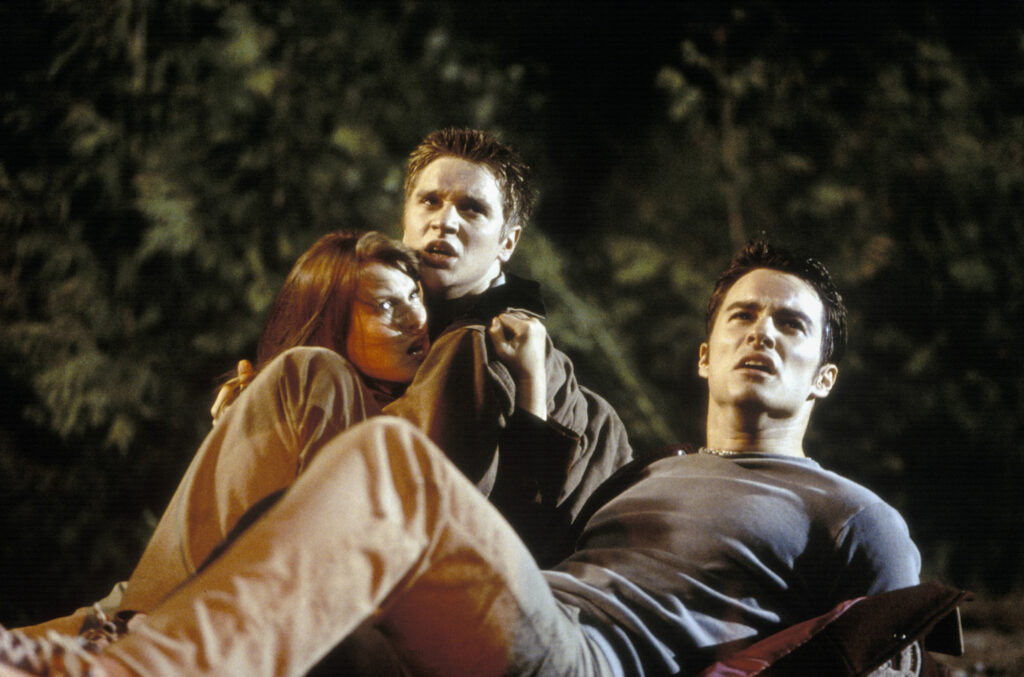
Yet it’s that same formulaic rigor which makes the franchise so endlessly versatile and repeatable. On account of its pervasive cruelty and excessive gore, Final Destination is technically a horror series, but in terms of cinematic grammar, its entrants more accurately operate as action movies. They concoct inventive and intricate set pieces in which characters scramble, with great energy if limited intelligence, to avoid bodily harm. The only difference is that, instead of fighting other people, they’re waging war against inanimate objects, slippery surfaces, and the unforgiving laws of nature.
It would require reams of text (plus a level of #HorrorLifestyle discipline that I lack) to comprehensively catalog all of the kills in the Final Destination franchise, and all of the random appliances that become instruments of murder. In some cases, the movies seize on typical fears (flying, falling) and simply apply Murphy’s Law to them, resulting in a daisy chain of escalating pandemonium. The famous opening scene of Final Destination 2, with its ominous logging truck and its spilled cups of coffee, will make anyone think twice before turning onto the highway. Final Destination 3 begins with a sequence of airborne anarchy so nightmarish—one in which rusty screws and lapsed protocols conspire to turn a roller-coaster ride into a death trap—it surely cost the amusement-park industry millions.
Those moments are impressive, but they also represent the filmmakers grasping low-hanging fruit. The saga’s real achievement lies in how fiendishly it weaponizes the mundane—how everyday life warps into unceasing death. The Final Destination pictures take place in a heightened but not-quite-supernatural reality where the possibility of disaster lurks everywhere—where tanning beds are tombs, where elevators are gallows, where water is always snaking its way into electrical outlets. I watched all of the franchise’s movies over a one-week span in preparation for the latest installment, Bloodlines, and now everything I look at—my garbage disposal, my shower curtain, my stapler—seems to pose a lethal threat.
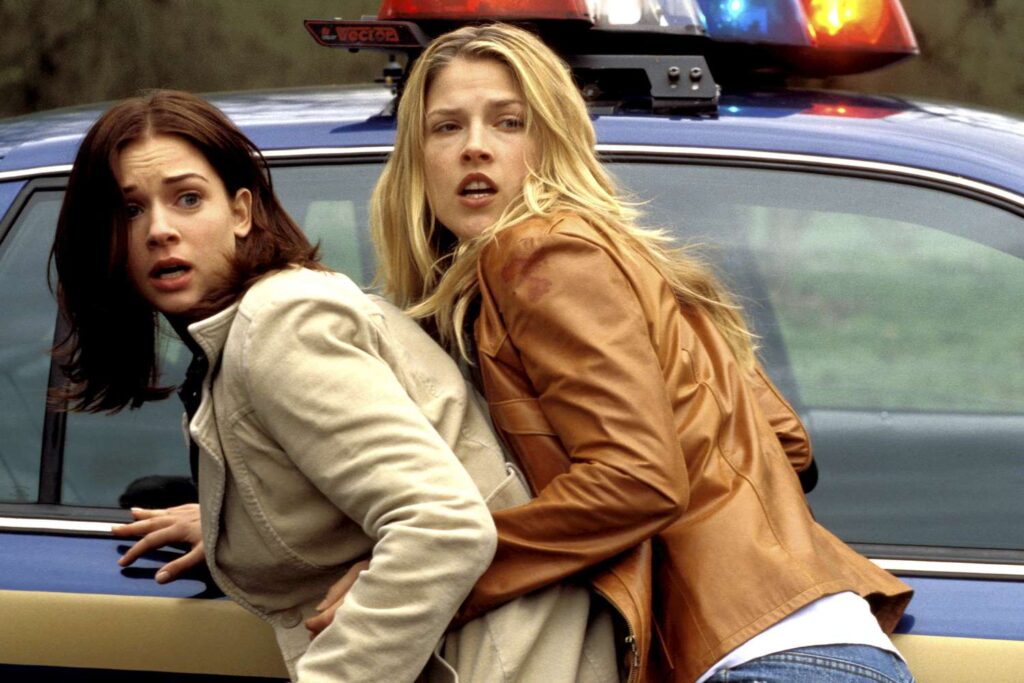
This is a clever conceit, and it’s often implemented with considerable flair; it also features the bonus of exploiting viewers’ particular anxieties. (As someone who suffers from ommetaphobia, I remain traumatized by the moment in Final Destination 5 when an appointment for laser-eye surgery goes horribly wrong.) Yet despite their conceptual bravura, these movies struggle to work as proper entertainment, instead mostly functioning as canny individual sequences sloppily stitched together. It’s an issue of effort: Depending on the facet of the production, the franchise tries either too little or too hard.
For the former, consider the series’ lackluster approach to character development. The inhabitants of a Final Destination movie occupy one of two types: the insufferable asshole whose inevitable demise warrants audience applause, or the well-meaning lead who’s petrified by the sudden blitz of death that engulfs everyone around them. The latter construct isn’t bad in theory, but the cycling screenwriters never bother to imbue their heroes with any real personality.
It doesn’t help that the casting method tends to involve looking for pretty white faces whose presence is as generic as possible. Do you remember Devon Sawa? Have you ever heard of A.J. Cook or Nicholas D’Agosto? Who the fuck is Bobby Campo? Their careers may not have been murdered in quite the same fashion their characters were, but there’s a reason these actors have labored to carve out work in television.
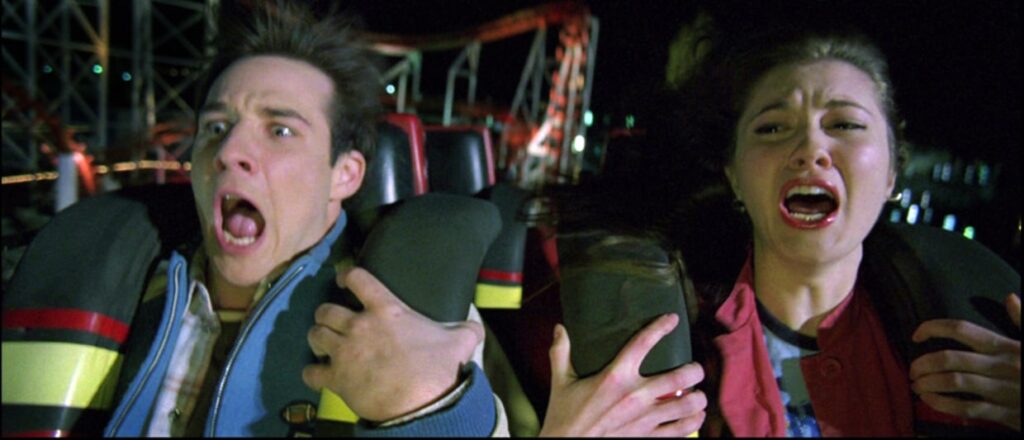
The obvious exception is Mary Elizabeth Winstead, who used her starring role in Final Destination 3 as a springboard to help launch a diverse and appealing filmography. I’d hoped her talent might elevate the movie around her, but despite her sympathetic bearing, she’s hamstrung by yet another terrible script—the kind in which everyone repeatedly refers to her character as a “control freak,” the better to emphasize her flailing struggle as catastrophe mushrooms around her.
If anything, the real star of the series is Jeffrey Reddick, whose spec script for The X-Files eventually morphed into the franchise’s inaugural episode. As a set piece machine, the original Final Destination (directed by James Wong) is underwhelming; aside from a playful sequence in a possessed kitchen, most of the deaths are unmemorable. But the movie does concisely establish a faintly brilliant template—after experiencing a premonition of bloodshed, the protagonist saves a small cohort from disaster, only for each of its members to systematically die in random and ghoulish ways—one which the suits at New Line realized was ripe for exploitation and replication.
Yet while all of the sequels (well, almost all) execute this scheme with greater dynamism, they also exhibit a fidelity to the lore of the original that’s unwieldy and, quite frankly, bizarre. Final Destination 2, which finds David R. Ellis replacing Wong in the director’s chair, doesn’t just bring back Ali Larter (of whipped-cream-bikini fame); it also spends a baffling amount of time having its characters research the events of the first film, evincing an obsession with continuity that evokes the endless callbacks of the Marvel Cinematic Universe. I get that these movies need some connective tissue between their scenes of grisly mayhem, but that doesn’t mean they should laboriously link with one another.
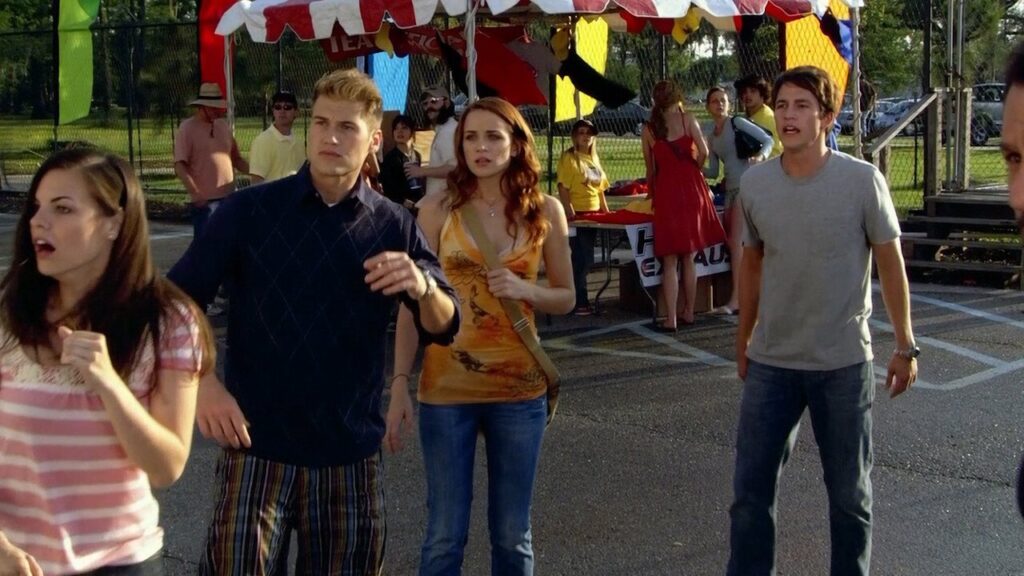
For a franchise founded on chaos, the Final Destination films are weirdly obsessed with order—and I mean that literally; all of the movies feature scenes where people sweatily conjecture about who in their specific orbit is next scheduled to kick the bucket, convinced that death is abiding by a linear kill list. Final Destination 3 attempts to introduce an additional wrinkle—Winstead’s amateur photographer realizes that her pictures might afford some sort of clue—but Wong (returning as director) lacks the vision to make the idea stick. As for the fourth episode, technically titled The Final Destination (with Ellis replacing Wong yet again), it’s mostly concerned with brandishing its ghastly 3-D gimmick—it constantly hurls bloody blades and severed limbs out of the screen, like a heckler chucking objects at your head—but it too wastes time blathering about the matter of sequence.
Without quite rejecting all of this dreary mythology, Final Destination 5 (directed by Steven Quale) reorients it in a direction that passes for interesting—namely, its revelation that people can cheat death not just by “intervening” (whatever that means) but by killing somebody else, thereby allowing the slayer to acquire the victim’s remaining allotted years. Absurdity aside (death offers annuities now?), the tweak adds a frisson of intrigue to the systematic bloodletting, as it allows for the emergence of a genuine human villain alongside the standard bridge collapses and massage-parlor mishaps. Ironically, this innovation ends up reinforcing the value of the franchise’s central conceit: that the evil on hand is invisible and metaphysical. The climax of Final Destination 5 (not to be confused with its nasty, time-scrambling denouement) is notably different from its predecessors, which is another way of saying it’s the same as any generic thriller.

Which brings me, at last, to Final Destination Bloodlines, the series’ half-triumphant, half-tedious revival following a 14-year absence. The sheer length of time lying dormant means that this resuscitation was virtually compelled to shake things up, and it does—sort of. As its title implies, Bloodlines takes the franchise’s “we’re all doomed” concept and applies it to a group of relatives. As ever, it retains a sequential focus, but it twists the gimmick from circumstantial to genealogical; whereas previously Death was hunting down various people who happened to survive a deadly incident, here he is rigorously pruning the branches of a specific family tree.
It’s a cute enough adjustment, though it might be more successful if the characters weren’t so predictably forgettable. To be fair, the cast is less awful than usual; as the lead, Kaitlyn Santa Juana is a more sturdy presence than her non-Winstead forebears, while Richard Harmon scores some laughs as her disaffected cousin. In fact, Bloodlines delivers what’s probably the franchise’s single funniest sequence, a classic parade of Rube Goldberg horrors whose ordinary components—a leaf blower, a trash can, a soccer ball—are manipulated with great depth of field and exquisite timing.
The incoming directors here are Zach Lipovsky and Adam Stein, and they assume control of the series with confidence and competence. The opener, a ’60s-set banger set at a saucer-shaped restaurant precariously perched atop a plainly unstable skyscraper (recalling this year’s Drop), deploys the requisite malfunctions—breaking glass, faltering fans, inopportunely placed coins—with rhythmic precision. Later, a scene at a hospital somehow manages to combine the whirring modernity of an MRI vessel with the creaking antiquity of a vending machine. (In these movies, any maximum numerical warning—whether measured in volts, watts, or tons—is destined to be exceeded.) It’s not spectacular, but it’s solid.

And yet, while Bloodlines’ steadiness is reasonably satisfying, it’s also a little deflating. Lurking beneath this franchise’s waves of giddy violence is a riptide of nihilism: the recognition that these poor saps are fucked no matter what they do. Thematically, that’s kind of the point—Death is the ultimate boogeyman, the intractable killer nobody can escape—and Bloodlines metatextually underscores the idea by bringing back Tony Todd (appearing for the fourth time), whose wizened wisdom gains undeniable resonance with our knowledge that the actor died last year (purportedly after his scenes were completed). But in practice, the series’ regimented execution of its ruthless premise, whereby characters live only to die, annihilates any chance of human dimension or emotional attachment.
Is it too much to ask for a Final Destination movie to deliver gnarly and elaborate sequences of death—by car wash, by forklift, by barbell—while also supplying personalities we grow to care about? Maybe. Still, if Bloodlines confirms that the series is immune to genuine innovation, it also demonstrates that its formula is as reliable as it is immutable. This franchise seems unlikely to ever truly grow. But it’s not dying anytime soon.
Loose Franchise Ranking
Dramatically flawed, solidly executed: Final Destination 3, Final Destination 5, Final Destination Bloodlines, Final Destination 2
Cool concept, weak execution: Final Destination
Bad: The Final Destination
Jeremy Beck is the editor-in-chief of MovieManifesto. He watches more movies and television than he probably should.
